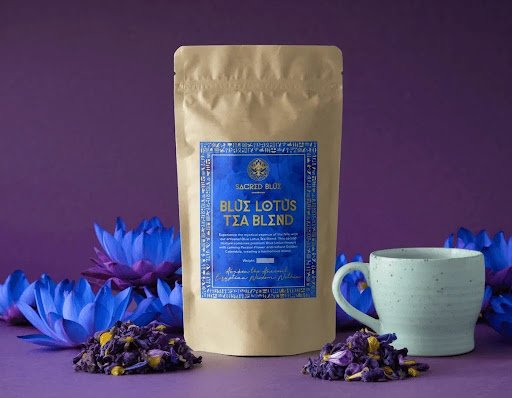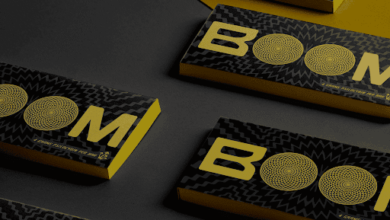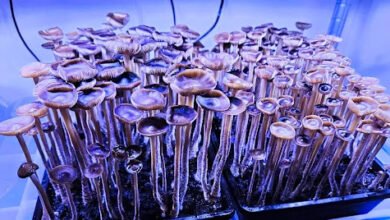Blue Lotus Tea: A Soothing Elixir from Ancient Times

Blue Lotus Tea has a long-standing history rooted in ancient cultures, especially in Egypt and Asia. Revered for its calming and mildly psychoactive properties, it is made from the blue lotus flower — a water lily that has captivated humans for centuries. Today, Blue Lotus Tea is becoming increasingly popular as a herbal remedy and a natural relaxant, often consumed to relieve stress, promote sleep, and enhance mood.
In this article, we’ll explore everything you need to know about Blue Lotus Tea — from its origins and preparation to its health benefits and modern uses.
What is Blue Lotus Tea?
Blue Lotus Tea is a herbal infusion made by steeping the dried petals or buds of the blue lotus flower (scientifically known as Nymphaea caerulea) in hot water. Despite the name “lotus,” the plant is actually a species of water lily native to the Nile River region and other parts of North Africa.
The tea has a slightly sweet, floral taste and a calming aroma. It is often consumed before bedtime for its soothing effects, which are attributed to naturally occurring compounds in the flower, such as aporphine and nuciferine.
History and Cultural Significance
The Ancient Egyptian Connection
The blue lotus held significant symbolic and spiritual value in ancient Egypt. It was often depicted in hieroglyphs, temple carvings, and religious art. Egyptian priests and royalty used the flower in rituals, often soaking it in wine to extract its psychoactive effects. The flower was considered sacred and was associated with rebirth, the sun, and spiritual awakening.
Use in Other Cultures
Beyond Egypt, the blue lotus was used in Ayurvedic medicine and traditional Chinese practices. It was believed to balance the body’s energy and was used in tonics and teas to promote tranquility and clarity of mind.
How is Blue Lotus Tea Made?
Sourcing the Flower
Authentic Blue Lotus Tea is made from Nymphaea caerulea, not to be confused with the “sacred lotus” (Nelumbo nucifera). The flowers are usually sun-dried and sold as whole buds or petals. Quality can vary, so it’s important to buy from trusted, organic sources.
Brewing Instructions
Brewing Blue Lotus Tea is simple:
- Ingredients:
- 1-2 whole dried blue lotus flowers or 1-2 teaspoons of dried petals
- 1 cup of hot (not boiling) water
- Instructions:
- Heat the water to around 90°C (194°F). Avoid boiling, as it may damage the active compounds.
- Place the dried flower or petals in a teacup or teapot.
- Pour hot water over the petals and let steep for 10–15 minutes.
- Strain and enjoy warm.
Optional: Add honey or lemon for extra flavor.
Active Compounds and Effects
Key Compounds
- Aporphine: A dopamine agonist, which means it can promote feelings of pleasure and relaxation.
- Nuciferine: Known to have sedative and antipsychotic properties.
These compounds are responsible for the mild psychoactive and calming effects of Blue Lotus Tea.
Psychoactive Properties
Although not hallucinogenic in the traditional sense, the tea can produce a feeling of mild euphoria, calm, and increased awareness. These effects are subtle and usually not overwhelming. Because of this, Blue Lotus Tea is often used in meditation and spiritual practices.
Health Benefits of Blue Lotus Tea
1. Stress and Anxiety Relief
One of the most celebrated benefits of Blue Lotus Tea is its calming effect on the nervous system. Many people use it as a natural remedy for stress and anxiety, similar to how chamomile or lavender tea is used.
2. Improved Sleep Quality
Thanks to its sedative-like properties, drinking a cup of Blue Lotus Tea before bed can help relax the mind and body, potentially improving sleep quality.
3. Mood Enhancement
The natural compounds in blue lotus may increase dopamine levels, leading to a better mood and reduced symptoms of mild depression. While not a replacement for medication, it can be a supportive herbal aid.
4. Menstrual Pain Relief
Historically, the tea has been used to ease menstrual cramps and discomfort. Its muscle-relaxing properties may help reduce pain and inflammation.
5. Antioxidant Support
Like many herbal teas, Blue Lotus Tea contains antioxidants that help combat oxidative stress, which contributes to aging and chronic disease.
Is Blue Lotus Tea Legal?
Yes, in most countries, Blue Lotus Tea is legal to buy, sell, and consume. However, in some regions, the flower or its extracts may be regulated, especially in highly concentrated forms or when marketed for psychoactive use.
Always check local regulations before purchasing.
Side Effects and Precautions
While generally considered safe when consumed in moderate amounts, Blue Lotus Tea may cause:
- Drowsiness
- Mild dizziness
- Interaction with sedative medications or alcohol
It’s recommended to:
- Avoid driving or operating machinery after consumption.
- Not mix with strong pharmaceuticals, especially antidepressants or sedatives.
- Consult with a healthcare provider if pregnant, nursing, or dealing with health conditions.
How to Choose the Right Blue Lotus Product
Not all blue lotus products are made the same. Here are tips for choosing quality tea:
- Look for organic, pesticide-free sources.
- Check the botanical name (Nymphaea caerulea) on the label.
- Avoid extracts or products that don’t disclose ingredients.
- Read customer reviews and buy from reputable herbal tea companies.
Blue Lotus in Modern Wellness Trends
In recent years, Blue Lotus Tea has been gaining traction in the wellness and alternative health communities. It’s commonly included in:
- Mindfulness and meditation routines
- Tea ceremonies
- Herbal tea blends with other calming herbs like chamomile or passionflower
Its blend of ancient mystique and modern-day relaxation benefits makes it an attractive option for those seeking natural solutions to modern problems.
Conclusion: Should You Try Blue Lotus Tea?
Whether you’re curious about ancient herbal remedies or simply looking for a new tea to help unwind after a long day, Blue Lotus Tea offers a unique and beneficial experience. With its calming effects, subtle psychoactivity, and rich cultural background, it stands out among other herbal infusions.
Always make sure to use it responsibly and source it from reputable sellers to get the best quality and experience. As with any herbal supplement, listen to your body and consult a professional if you have any concerns.



